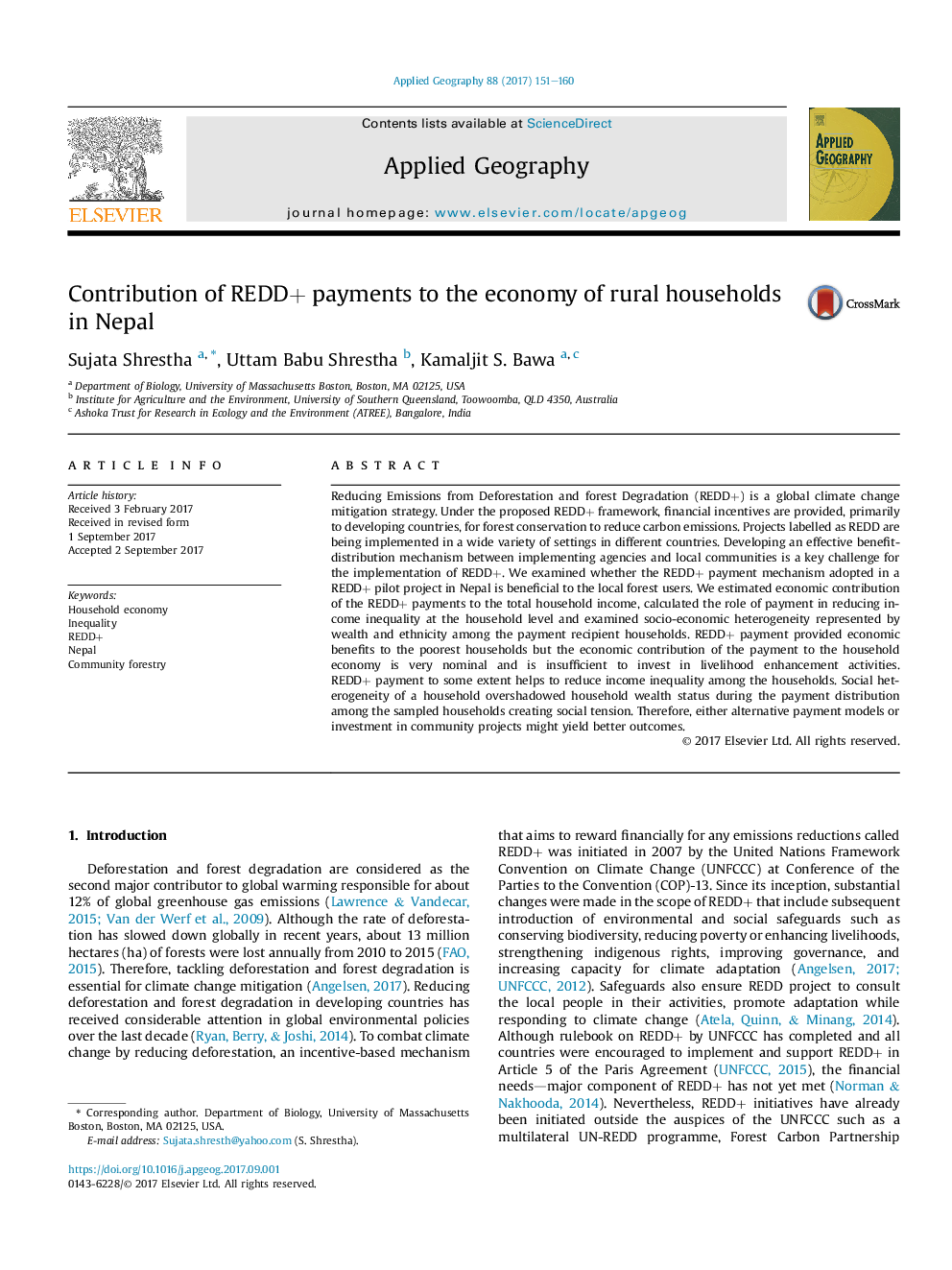| کد مقاله | کد نشریه | سال انتشار | مقاله انگلیسی | نسخه تمام متن |
|---|---|---|---|---|
| 6458298 | 1421029 | 2017 | 10 صفحه PDF | دانلود رایگان |

- An effective benefit distribution mechanism is a key challenge for the implementation of REDD+.
- Measuring the benefit distribution at household level enables us to plan for future REDD+Â projects.
- The contribution of the REDD+Â payments to household economy and its role in reducing income inequality is nominal.
- The current REDD+Â benefit distribution mechanism needs to be reviewed.
Reducing Emissions from Deforestation and forest Degradation (REDD+) is a global climate change mitigation strategy. Under the proposed REDD+Â framework, financial incentives are provided, primarily to developing countries, for forest conservation to reduce carbon emissions. Projects labelled as REDD are being implemented in a wide variety of settings in different countries. Developing an effective benefit-distribution mechanism between implementing agencies and local communities is a key challenge for the implementation of REDD+. We examined whether the REDD+Â payment mechanism adopted in a REDD+Â pilot project in Nepal is beneficial to the local forest users. We estimated economic contribution of the REDD+Â payments to the total household income, calculated the role of payment in reducing income inequality at the household level and examined socio-economic heterogeneity represented by wealth and ethnicity among the payment recipient households. REDD+Â payment provided economic benefits to the poorest households but the economic contribution of the payment to the household economy is very nominal and is insufficient to invest in livelihood enhancement activities. REDD+Â payment to some extent helps to reduce income inequality among the households. Social heterogeneity of a household overshadowed household wealth status during the payment distribution among the sampled households creating social tension. Therefore, either alternative payment models or investment in community projects might yield better outcomes.
Journal: Applied Geography - Volume 88, November 2017, Pages 151-160